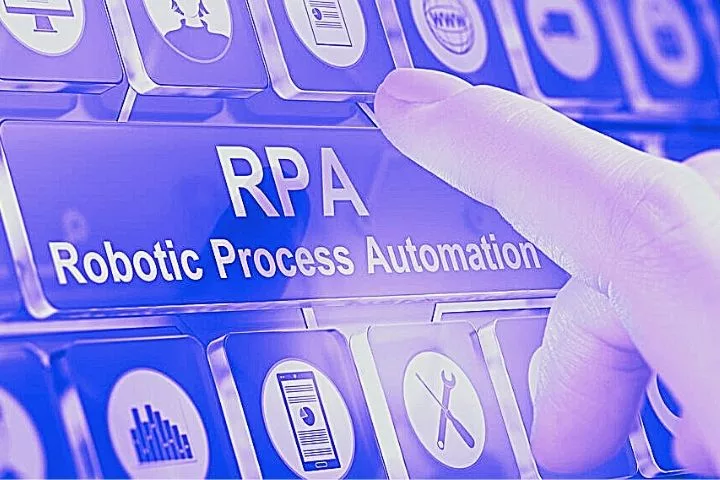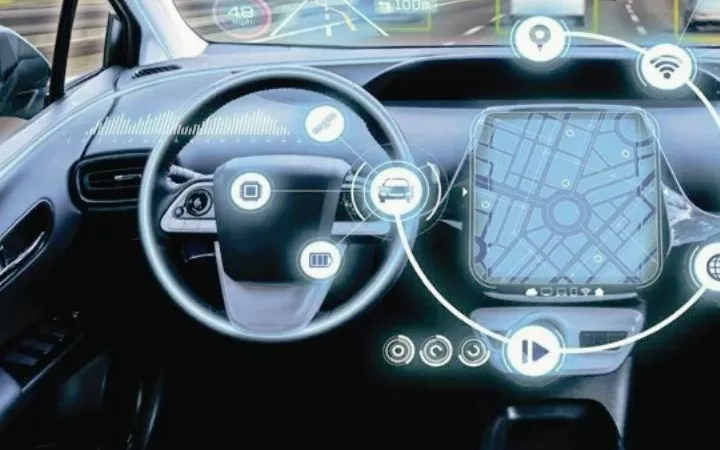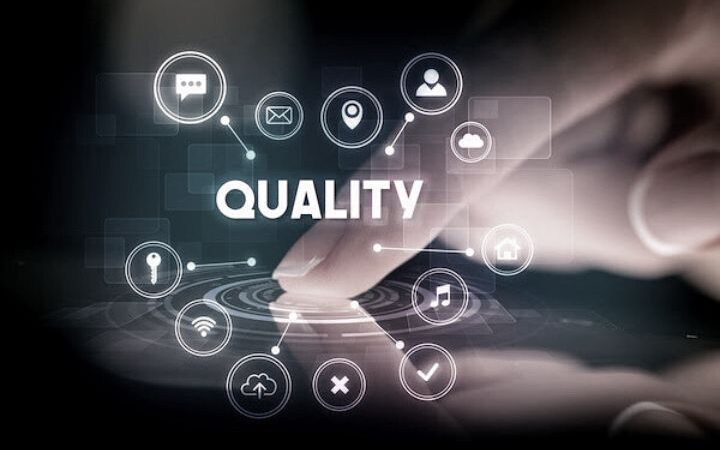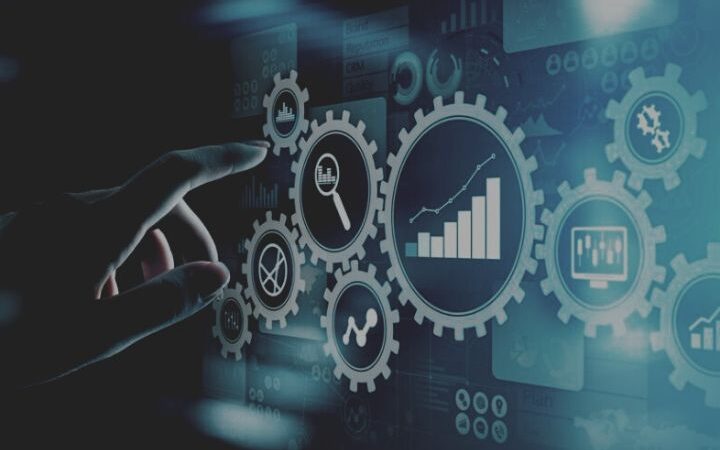Robotic Process Automation (RPA): Explanation, Requirements And Applications

What is meant by Robotic Process Automation
Robotic Process Automation , for example, robot-controlled process automation – is a technology that emerged from classic process automation. Robotic Process Automation is based on the use of programmable software robots, so-called “bots.”
These bots can automatically process daily routine activities, which permanently relieves employees in the company.
As a result, many business processes can be sustainably optimized, and operational efficiency can be increased. About the provision of software robots, the term Robots as a Service (RaaS) is often used.
The areas of application of the bots range from simple data queries and form entries to complex activities such as operating electronic systems.
There is a tendency for all standardized processes that follow a fixed set of rules and run according to a specific pattern to be taken over by bots and quickly executed without errors.
Characteristics
The robots need rules and guidelines to carry out their activities. The corresponding work instructions are either programmed in advance or dynamically developed while the task is being processed with the help of artificial intelligence (AI) and machine learning methods.
In this way, the bots are sometimes able to react flexibly to different situations and, in exceptional cases, to make their own decisions.
The implementation of Robotic Process Automation technology in an existing system is comparatively straightforward: the bots are not part of the underlying IT infrastructure.
Still, they are executed as a program by virtual machines. Accordingly, other applications do not have to be changed, and no new application interfaces (APIs) have to be programmed. Instead, the software robots can be adapted to any interface and any workflow.
There the bots then imitate the behavior of human users and mimic inputs into the user interface at a virtual workstation. In this way, the software robots can carry out cross-application activities in the ERP system and relieve their human employees.
Historical Development
The automation of processes is nothing new. Production steps have been automated with the help of production robots for decades. Digital process automation has also made significant progress.
Software robots began to be used in social media as early as the early 2000s. To this day, posts and circulars often come from digital employees.
Other technologies considered key to RPA development are screen scraping, workflow automation, and artificial intelligence.
In everyday life, we interact with chatbots, and the robots are also tirelessly at work behind the front-end scenes, e.g., when processing our online orders. New approaches are constantly being sought to make individual work steps more efficient through the use of bots.
RPA has become an indispensable part of modern companies.
Market development
RPA is very trendy, as it offers an easy entry into the digitization of business processes and increases efficiency by freeing employees from annoying routine work.
Furthermore, RPA solutions score because they are easily scalable, process-independent, and applicable in all industries and company areas. I
n addition, there is an increase in quality and productivity by avoiding human errors and the shortened response time to customer requirements.
These factors lead to the increasing acceptance of RPA technologies in companies and powerfully drive the growth of the RPA market. Worldwide RPA software and services sales are expected to grow to over USD 5 billion in the next few years.
Many companies are strategically using process automation very aggressively and plan to automate increasingly more significant parts of their business processes.
Complete automation of specific activities with a high degree of standardization seems realistically feasible with a corresponding investment within the next few years.
Prospects
RPA technologies should soon have almost limitless potential in their constant further development: Bots can already be equipped with artificial intelligence and trained explicitly for complex activities through machine learning.
In combination with big data technologies, it is possible for these adaptive robots to function as reliable decision-making aids according to best-practice models or to be used for the precise evaluation of complicated issues.
Intelligent automation is still immature, but it is already being used by some pioneering companies and is likely to be further developed and optimized for different application areas in the coming years.
Traditional process automation vs. Robotic Process Automation
Traditional process automation is widely implemented using the Business Process Management (BPM) approach. The optimization of business processes is to be achieved with the help of Business Process Automation (BPA), i.e., technology-supported process automation.
To make this possible, BPM platforms are set up in the backend as an integral part of the process solutions for automating workflows.
The integration of BPM systems requires the setting up new interfaces and extensive revision of previous applications, which is why extensive tests must first be carried out for the system changeover.
In addition, the automated processes are relatively static and can only react independently to changed situations to a limited extent.
In contrast to this, Robotic Process Automation takes the approach of Automate processes without having to invest in new platforms and without changing existing applications.
Since the software robots do not intervene in basic backend processes and operate similarly to human users, there is also no real need for additional system tests before implementation.
In addition, thanks to AI technologies, RPA applications can be flexibly adapted to changed circumstances and exceptional cases and communicate fluently with other systems.
Use cases
Software robots can be used in a variety of ways. As long as certain conditions are met, processes can be partially or fully automated. So the bots are ready for different tasks in different industries. In the following, you will find examples of automatable processes and industry-specific application possibilities.
Requirements for Robotic Process Automation
A large number of work steps can be simplified with RPA. However, not all company processes are equally suitable for automation, and specific criteria must be met must be fulfilled so that meaningful use of RPA can be made possible:
Since RPA works based on rules, the process must be well structured with clear instructions and have slight variance due to recurring laws.
Depending on the AI equipment of the robots, they can be very inflexible when processing tasks and already have problems with minor deviations, which may mean more effort than time savings.
In the case of complex processes, it should therefore be weighed up whether bots make sense and how intelligent they need to be. Tools such as process mining and process recording are used to identify suitable processes precisely.
You recognize where automation through RPA makes sense and whether the software robots can cope with the complexity of the task.
In general, those areas of application are suitable that
- They are rule-based and do not have too many variants in their execution.
- Based on structured input data.
- They are particularly prone to errors due to a high manual proportion.
- Have a medium to high transaction volume.
- Are labor-intensive.
- Have long terms.
- Not have to be changed significantly in the foreseeable future.
Typical tasks of Robotic Process Automation
Typical application scenarios of RPA are the processing of orders and customer inquiries, the implementation of data transfers, the management of master data and billing, the maintenance of customer data, or the updating of notifications
and status messages. In addition, many other routine activities can be taken over by bots. Here we present a partial overview of tasks that RPA can automate:
- Filling in forms
- Copy, paste, move & structure data
- Processing of data from different systems
- Reading structured documents
- Performing calculations
- Creation of reports
- Editing of log files
- Executing if-then commands
- Accessing websites & social networks
- Processing of data from the Internet
- Opening & sorting of e-mails as well as the processing of attachments
- Log in & operate electronic systems.
- Ticket processing and dispatching
- Data maintenance in the ERP & CRM system
Application scenarios
Even if RPA can be used almost everywhere, the robots have so far established themselves exceptionally well in specific industries. The introduction of software robots is beneficial in companies where data acquisition and management are essential for day-to-day business.
Other popular application areas are accounting, human resources, supply chain management (SCM), customer service, or help desk.
In the following, some industries are presented in which RPA is currently used successfully and widely.
Financial services sector
RPA enables the efficient and, above all, secure handling of financial processes such as account reconciliation, master data maintenance, invoicing, and cancellation processing. This means that employees’ resources can be used, for example, to deal with new regulatory challenges.
Insurance
Structured processes such as sending insurance confirmations, online new registrations, contract processing, changes to address data, calculating insurance premiums, and creating standing orders in the system can be automated by RPA.
Energy industry
Energy companies benefit from software robots by achieving greater transparency and increasing the workable volume. Bots can, for example, take over the processing of meter data, tariff adjustments, and new customers, as well as incoming process payments.
Healthcare
The administration and billing processes are reduced, which means that doctors and nursing staff have more time for their patients. Care is also improved by evaluating patient data more efficiently and providing decision-making aids.
Telecommunications
Automation in customer service, e.g., by answering customer inquiries or automatic measurements in the event of malfunctions, facilitating support, new customers, and order management. Employees in customer service are relieved and can focus their attention entirely on the customers.
Administration
RPA can counteract staff shortages and tight budgets in the public sector so that applications can be processed more quickly and appointments can be kept earlier. Bots take on activities such as checking, processing, and sending forms or calculating cash benefits.
Transport & logistics
Higher operational efficiency and thus more significant economies of scale are achieved by supporting back-office activities such as order entry, delivery planning, inventory management, or updates of customer data and charge statuses. In addition, access to data from logistics partners and billing companies can be automated.
Trade & E-Commerce
Due to a large number of intermediate stations, the retail industry offers a range of approaches for automated data exchange and the reduction of error-prone manual processes. This includes, for example, inventory management, product scanning, wage and salary accounting, dispatch notifications, invoicing, and returns processing.
Benefits of Robotic Process Automation
The advantages of switching to RPA in daily business processes are numerous and varied. Depending on the implementation, the following aspects can be significantly improved:
- Efficiency: By streamlining work processes, response times are shortened, and procedures are completed more quickly, which increases overall productivity.
- Cost savings: Due to their low license fees, software robots only cause around 30% of the costs of a full-time employee and provide five times the working time. This leads to a quick return on investment (ROI) so that the return on the investment in RPA is between 30% and 200% in the first year.
- Data quality: The bots ensure transparency and consistency of data records. Defined controls and complete logging of the work steps ensure that the governance requirements are met.
- Error reduction: Strict adherence to regulations and standards ensures a high level of compliance and minimizes fraud risks. In addition, work accuracy is guaranteed even with high data volumes.
- Customer service: As employees have more time for customer needs and inquiries can be processed more quickly, customer satisfaction increases significantly.
- Employee satisfaction: The software robots are easy to use thanks to their user-friendliness and free employees from time-consuming routine work. Instead, they can focus on customer needs and strategic activities with higher added value, which increases overall commitment.
- Simple integration: The implementation does not require any new software and can be carried out by specialists, as no demanding programming knowledge is required. In addition, fragmented system landscapes can be integrated through the automation of end-to-end processes.
- Scalability: After the initial configuration, the process automation is highly scalable so that the digital workforce can be flexibly increased depending on the workload.
- Expansion options: Through AI and machine learning, intelligent automation can also be used for non-standardized processes.






